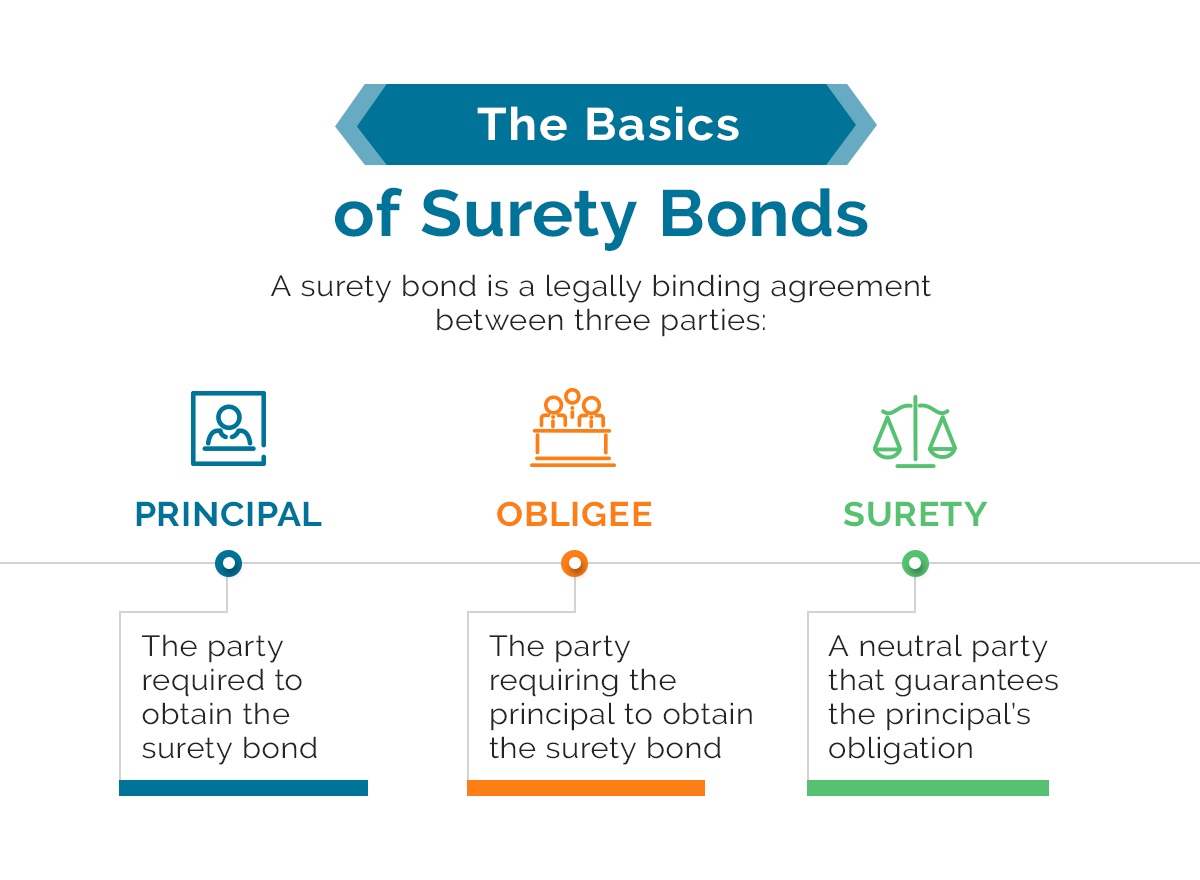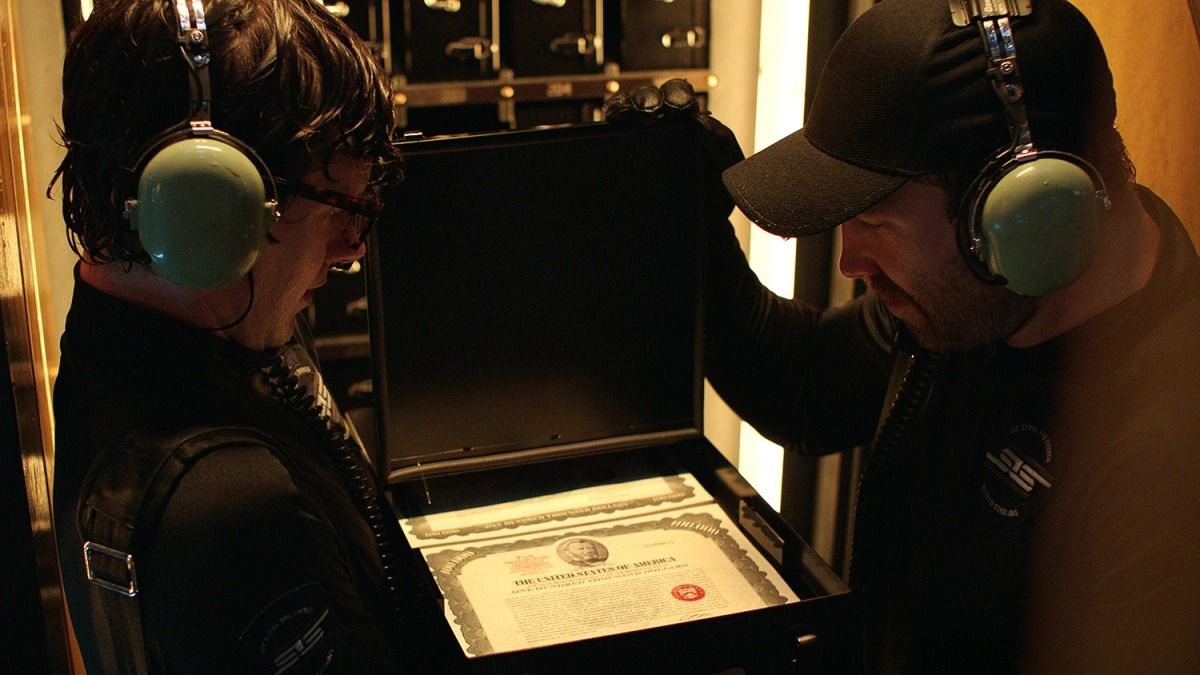

Finance
Who Is A Certifying Officer For Savings Bonds
Published: January 16, 2024
Find out who can serve as a certifying officer for savings bonds in the finance industry. Learn about the qualifications and responsibilities of this vital role.
(Many of the links in this article redirect to a specific reviewed product. Your purchase of these products through affiliate links helps to generate commission for LiveWell, at no extra cost. Learn more)
Table of Contents
- Introduction
- Definition of a Certifying Officer
- Role and Responsibilities of a Certifying Officer
- Qualifications and Eligibility Criteria for Becoming a Certifying Officer
- Appointment and Designation Process for Certifying Officers
- Training and Certification Requirements for Certifying Officers
- Duties and Authorities of a Certifying Officer
- Oversight and Accountability for Certifying Officers
- Conclusion
Introduction
When it comes to financial transactions, there are often strict protocols and procedures in place to ensure accuracy, accountability, and security. One such role is that of a certifying officer for savings bonds. A certifying officer plays a crucial role in verifying and authorizing the issuance and redemption of savings bonds.
In this article, we will explore the role and responsibilities of a certifying officer, the qualifications and eligibility criteria required for this position, as well as the process for appointment and designation. We will also delve into the training and certification requirements that certifying officers must undergo, and the duties and authorities they possess. Lastly, we will touch on the oversight and accountability measures in place to ensure the integrity of certifying officers.
Certifying officers are an essential part of the financial system, providing a level of assurance and trust in the issuance and redemption of savings bonds. By understanding their role and responsibilities, we can gain insight into the inner workings of the financial system and the measures in place to safeguard both the government and the public.
So, let’s dive into the world of certifying officers and uncover the intricacies of this crucial financial position.
Definition of a Certifying Officer
A certifying officer is an individual authorized by a financial institution or governing body to validate and sign documents related to savings bonds. Their role is to certify the accuracy and authenticity of these documents, ensuring compliance with applicable laws and regulations.
Certifying officers have the responsibility to verify the identity and eligibility of individuals seeking to purchase or redeem savings bonds. They ensure that the necessary documentation is in order and that the transactions are conducted in accordance with established guidelines.
These officers play a critical role in the financial system, serving as gatekeepers who help maintain the integrity and security of savings bonds. By meticulously reviewing and validating the necessary paperwork, they prevent fraudulent activities and protect the interests of both the government and investors.
Certifying officers may be employed by financial institutions such as banks or credit unions, or they may work within government agencies responsible for the issuance and management of savings bonds. Regardless of their employer, they must adhere to strict protocols and follow standardized procedures to ensure accuracy and accountability.
In addition to their role in certifying transactions, these officers often serve as a point of contact for customers who have inquiries or require assistance with their savings bonds. They provide guidance, answer questions, and help individuals navigate the complexities of savings bond transactions, fostering positive customer experiences.
It is important to note that the exact responsibilities and scope of a certifying officer’s role may vary depending on the institution or organization they are affiliated with. However, their primary function remains consistent — to validate and certify the accuracy and legitimacy of savings bond transactions.
Role and Responsibilities of a Certifying Officer
Certifying officers play a vital role in ensuring the smooth and secure execution of savings bond transactions. Their responsibilities encompass a wide range of tasks, all aimed at maintaining accuracy, compliance, and accountability. Let’s delve into the key responsibilities of a certifying officer:
- Verification and Authentication: One of the primary responsibilities of a certifying officer is to verify the identity and eligibility of individuals involved in savings bond transactions. They carefully review identification documents, such as government-issued IDs and social security numbers, to ensure their authenticity.
- Document Review and Validation: Certifying officers meticulously review all relevant documents, such as application forms, redemption requests, and power of attorney documents, to ensure they are completed accurately and in compliance with applicable regulations. They authenticate the information provided and identify any discrepancies or red flags.
- Transaction Authorization: Upon verification and validation, certifying officers are responsible for authorizing and overseeing the issuance or redemption of savings bonds. They apply their signature or certification stamp as a formal endorsement, confirming that the transaction has met all necessary requirements.
- Compliance and Regulatory Adherence: Certifying officers must stay up to date with the latest laws, regulations, and policies governing savings bonds. They ensure that all transactions comply with the relevant regulations and guidelines set forth by governing bodies, such as the U.S. Department of the Treasury.
- Customer Assistance and Education: Certifying officers often act as a point of contact for customers, offering guidance and assistance throughout the savings bond process. They address customer inquiries, provide support for account management, and offer educational resources on the benefits and features of savings bonds.
- Record-Keeping and Reporting: Certifying officers maintain comprehensive records of all savings bond transactions they handle. They accurately document relevant details such as transaction dates, customer information, and transaction amounts. Additionally, they may be responsible for generating reports and submitting necessary documentation to higher authorities.
- Fraud Prevention and Risk Mitigation: Certifying officers play a crucial role in safeguarding against fraudulent activities. They are trained to detect and report any suspicious transactions or behavior that may indicate potential fraudulent activity. Their vigilance helps protect the government and investors from financial loss and ensures the integrity of the savings bond program.
The role of a certifying officer is multifaceted, requiring attention to detail, strong analytical skills, and a deep understanding of savings bond regulations. By carrying out their responsibilities diligently, certifying officers contribute to maintaining the trust and confidence of investors while upholding the integrity of the financial system.
Qualifications and Eligibility Criteria for Becoming a Certifying Officer
Becoming a certifying officer requires individuals to possess a specific set of qualifications and meet eligibility criteria. While the exact requirements may vary depending on the institution or organization, there are common prerequisites that aspiring certifying officers should be aware of. Let’s explore these qualifications and eligibility criteria:
- Educational Background: Most institutions require certifying officers to have a minimum educational qualification of a high school diploma or equivalent. However, some organizations may prefer candidates with a bachelor’s degree in a related field, such as finance or business administration.
- Knowledge of Financial Regulations: A solid understanding of financial regulations and procedures is essential for certifying officers. They should possess knowledge of savings bond regulations, applicable laws, and compliance requirements to ensure adherence and minimize risks.
- Experience: Prior experience in finance, banking, or a related field can be advantageous for aspiring certifying officers. Experience in customer service and dealing with financial transactions can provide a strong foundation for handling the responsibilities associated with the role.
- Attention to Detail: Given the nature of their responsibilities, certifying officers must have exceptional attention to detail. They should be meticulous in reviewing documents, identifying discrepancies, and ensuring accuracy in all transactions.
- Ethical and Trustworthy Behavior: Certifying officers are entrusted with sensitive financial information and have access to confidential documents. Therefore, they must exhibit high ethical standards, maintain absolute confidentiality, and adhere to professional codes of conduct.
- Communication and Interpersonal Skills: Effective communication skills are crucial for certifying officers, as they will interact with customers, colleagues, and other stakeholders regularly. They should possess strong verbal and written communication skills, as well as the ability to handle customer inquiries and provide clear explanations of savings bond processes.
- Computer Literacy: Certifying officers should be proficient in using computer systems and software applications relevant to their role. This includes navigating databases, inputting and retrieving information, and generating reports.
- Licensing and Certifications: Some institutions may require certifying officers to obtain specific licenses or certifications. These may include certifications related to savings bond operations, financial regulations, or other industry-specific qualifications.
It is important to note that each institution or organization may have additional requirements or preferences when selecting certifying officers. Some may conduct background checks or require candidates to undergo additional training programs to acquire the necessary skills and knowledge.
By meeting these qualifications and eligibility criteria, individuals can position themselves for a career as a certifying officer and contribute to ensuring the integrity and security of savings bond transactions.
Appointment and Designation Process for Certifying Officers
The appointment and designation process for certifying officers involves several steps to ensure that qualified individuals are selected for the role. While the exact process may vary depending on the institution or organization, there are common elements and considerations. Let’s explore the typical steps involved in appointing and designating certifying officers:
- Application: Interested candidates typically begin by submitting an application expressing their interest in becoming a certifying officer. The application may require the submission of a resume, educational qualifications, and any relevant certifications or licenses.
- Screening and Evaluation: After the initial application review, the institution or organization will conduct a screening process to assess the suitability of the candidates. This may involve evaluating their educational qualifications, experience, and skills to ensure they meet the basic eligibility criteria.
- Interview: Qualified candidates may be invited for an interview to further assess their suitability for the role. The interview allows the institution to evaluate factors such as communication skills, professionalism, and the ability to handle specific job-related scenarios.
- Background Check: Institutions often conduct background checks as part of the appointment process. This may involve verifying the candidate’s employment history, conducting criminal record checks, and confirming their eligibility to work in the country.
- Selection and Approval: Based on the screening, evaluation, interview, and background check results, the institution or organization will select the candidates deemed most suitable for the role. The final selection may involve approval from designated authorities or decision-making committees within the institution.
- Training and Orientation: Once selected, certifying officers typically undergo training and orientation programs to familiarize themselves with the institution’s policies, procedures, and specific guidelines for savings bond transactions. This may include training on legal and regulatory requirements, customer service, and system operations.
- Designation and Appointment: After completing the necessary training, certifying officers are officially designated and appointed to their positions. They may receive official documentation or credentials affirming their role as certifying officers.
It is crucial to highlight that appointment and designation process variations can exist depending on the institution or organization. Large financial institutions and government agencies may have more formalized and elaborate procedures, while smaller organizations may follow simplified processes. Additionally, some institutions may have specific internal guidelines or requirements for ongoing performance evaluations and reappointment cycles.
Appointing and designating qualified individuals as certifying officers is essential to maintain the integrity and trust in savings bond transactions. By following a rigorous process, institutions can ensure that only competent and ethical individuals are entrusted with the responsibilities associated with certifying officers, safeguarding the interests of both the government and investors.
Training and Certification Requirements for Certifying Officers
Training and certification are crucial components of preparing certifying officers for their responsibilities. These requirements ensure that certifying officers possess the necessary knowledge and skills to carry out their duties effectively. While the specific training and certification requirements may vary depending on the institution or organization, there are common elements that aspiring certifying officers can expect. Let’s explore these requirements:
- Basic Training: Certifying officers typically undergo initial training that familiarizes them with the overall savings bond program, policies, and procedures. This training covers topics such as transaction processing, document verification, compliance guidelines, and customer service.
- Legal and Regulatory Education: Certifying officers receive education and training on the relevant laws, regulations, and policies associated with savings bond transactions. This includes understanding the provisions of the U.S. Department of the Treasury regulations pertaining to savings bonds and applicable securities laws.
- System and Software Training: Certifying officers are trained to use the specific systems and software applications employed by their institution for savings bond transactions. This involves learning how to input and retrieve data, generate reports, and navigate the electronic platforms used for transaction processing.
- Security and Fraud Prevention: Training on security measures and fraud prevention is vital for certifying officers. They learn about common fraud schemes, red flags to watch for, and strategies to protect against unauthorized activities. This training equips them with the knowledge to safeguard the interests of the government and investors.
- Customer Service and Communication Skills: Certifying officers receive training on effective customer service strategies. They learn how to handle customer inquiries, provide accurate and clear information, and address customer concerns in a professional and courteous manner. This training enhances their interpersonal and communication skills.
- Continuing Education: In order to stay updated with evolving regulations and industry best practices, certifying officers often undergo periodic continuing education programs. These programs provide refresher training and address any new developments in the field of savings bonds.
In addition to training, certain certifications may be required or recommended for certifying officers. These certifications validate the individuals’ knowledge and expertise in savings bond operations and regulations. The most common certification for certifying officers is the Savings Bond Operations Specialist (SBOS) certification, offered by various organizations within the financial industry. Obtaining this certification demonstrates a comprehensive understanding of savings bond procedures, regulations, and customer service best practices.
It’s important to note that different organizations may have their own specific training and certification requirements. Certifying officers should proactively seek opportunities for professional development and stay well-informed about any new training or certification options available in their field.
By meeting the training and certification requirements, certifying officers can fulfill their role effectively, ensuring compliance with regulations, providing excellent customer service, and contributing to the integrity and security of savings bond transactions.
Duties and Authorities of a Certifying Officer
Certifying officers hold important responsibilities and possess specific duties and authorities. Their role involves ensuring the accuracy, compliance, and security of savings bond transactions. Let’s explore the key duties and authorities of a certifying officer:
- Verification and Certification: Certifying officers have the duty to verify the identity and eligibility of individuals involved in savings bond transactions. They carefully review identification documents, application forms, and supporting documentation to ensure their accuracy and authenticity. Upon verification, certifying officers certify the transactions by applying their signature or certification stamp.
- Transaction Processing: Certifying officers handle the processing of savings bond transactions. This includes receiving and reviewing applications for bond purchases or redemptions, ensuring all necessary information is provided, and completing the required paperwork accurately and promptly. They accurately record transaction details and initiate the necessary actions for the issuance or redemption of savings bonds.
- Compliance and Regulatory Adherence: Certifying officers have the responsibility to ensure compliance with all applicable laws, regulations, and guidelines related to savings bond transactions. They stay up to date with the latest regulations and requirements established by governing bodies, such as the U.S. Department of the Treasury. By adhering to the established regulations, certifying officers contribute to maintaining the integrity and security of savings bond operations.
- Customer Service and Assistance: Certifying officers often serve as a point of contact for customers seeking assistance with savings bond transactions. They provide guidance, answer questions, resolve issues, and offer support throughout the process. Certifying officers must possess strong interpersonal skills and customer service acumen to ensure positive customer experiences.
- Record-Keeping and Documentation: Certifying officers are responsible for maintaining accurate and comprehensive records of savings bond transactions. They ensure that all relevant documents, including applications, redemption requests, and customer records, are properly organized, securely stored, and easily retrievable. This includes maintaining a record of any communications or interactions related to savings bond transactions.
- Monitoring and Reporting: Certifying officers monitor savings bond transactions for any suspicious activities or potential fraud. They are vigilant in identifying red flags and promptly reporting any irregularities to the appropriate authorities within their institution or organization. By exercising their authority to recognize and report suspicious activities, certifying officers play a crucial role in maintaining the integrity of savings bond transactions.
It’s important to note that the specific duties and authorities of a certifying officer may vary depending on the institution or organization they are affiliated with. Their responsibilities could extend beyond the ones listed above, depending on the institution’s specific requirements and processes.
By diligently carrying out their duties and exercising their authority, certifying officers contribute to the smooth operation of savings bond transactions, ensure compliance with regulations, protect customers’ interests, and maintain the integrity of the financial system.
Oversight and Accountability for Certifying Officers
The role of a certifying officer is accompanied by a framework of oversight and accountability measures to ensure the integrity and effectiveness of savings bond transactions. This helps guarantee that certifying officers uphold professional standards, follow established procedures, and act in the best interests of both the institution and the customers. Let’s explore the key aspects of oversight and accountability for certifying officers:
- Supervision and Monitoring: Certifying officers are subject to supervision and monitoring by higher authorities within their institution or organization. This ensures that their activities and performance align with established standards and guidelines. Regular evaluations and check-ins help identify areas for improvement and ensure ongoing compliance with applicable regulations.
- Internal Audits and Reviews: Financial institutions periodically conduct internal audits and reviews to assess the effectiveness of savings bond operations and the performance of certifying officers. These audits evaluate compliance with regulations, identify potential risks, and identify any areas that require corrective actions or further training.
- External Audits and Compliance: Regulatory bodies or external auditors may conduct audits to assess compliance with applicable laws and regulations. Certifying officers are expected to cooperate and provide necessary documentation for these audits to ensure transparency and accountability.
- Ethical Standards and Professional Conduct: Certifying officers are held to strict ethical standards and expected to adhere to professional codes of conduct. Any unethical behavior or violations can result in disciplinary actions, including suspension, termination, or legal consequences.
- Internal Controls and Safeguards: Institutions implement internal controls to mitigate risks and safeguard the savings bond program. These controls include segregation of duties, approval processes, and access restrictions to prevent unauthorized activities. Certifying officers are responsible for adhering to these internal controls and reporting any weaknesses or vulnerabilities they identify.
- Mandatory Reporting: Certifying officers are obligated to report any suspicious or potentially fraudulent activities they encounter during savings bond transactions. They must follow established channels to report such incidents promptly, ensuring appropriate action can be taken to address and resolve any issues.
- Continuing Education and Professional Development: Certifying officers are encouraged to participate in ongoing training and professional development activities. This ensures they stay informed about the evolving regulations, best practices, and emerging challenges in the savings bond industry. By continuously upgrading their skills and knowledge, certifying officers contribute to the overall improvement of the savings bond program.
The oversight and accountability measures for certifying officers create a system of checks and balances that help maintain the integrity of savings bond transactions. By holding certifying officers accountable and subjecting them to various audits and evaluations, institutions demonstrate their commitment to ensuring the highest standards of professionalism, compliance, and customer protection.
Certifying officers play a crucial role in maintaining public trust and confidence in the savings bond program. With proper oversight and accountability mechanisms in place, their role becomes even more effective and contributes to the overall success and stability of the financial system.
Conclusion
Certifying officers for savings bonds hold a significant role in the financial system, ensuring the accuracy, compliance, and security of savings bond transactions. Through their verification, certification, and processing of transactions, they contribute to maintaining the integrity of the savings bond program.
In this article, we explored the various aspects of the certifying officer role, starting with their definition and responsibilities. We discussed their duties, including verification, transaction processing, compliance, customer service, and record-keeping. We also highlighted the importance of their training and certification to equip them with the necessary skills and knowledge for the role.
We further looked into the appointment and designation process for certifying officers, emphasizing the significance of screening, interviews, background checks, and selection procedures to ensure that qualified individuals are selected for this crucial position. Additionally, we covered the importance of oversight and accountability measures, including supervision, audits, and ethical standards, to ensure the integrity and professionalism of certifying officers.
Certifying officers play a vital role in maintaining trust and confidence in savings bond transactions. Their adherence to regulations, attention to detail, and dedication to customer service help protect the financial interests of both the government and investors.
As the financial landscape continues to evolve, the role of certifying officers remains crucial in safeguarding savings bond transactions. By upholding the highest standards of professionalism, compliance, and ethical conduct, certifying officers contribute to a robust financial system built on trust, integrity, and accountability.
In conclusion, certifying officers serve as guardians of the savings bond program, ensuring the accuracy, security, and compliance of every transaction they handle. Their expertise and commitment to their responsibilities play a vital role in maintaining the trust and confidence of investors in the savings bond program.














